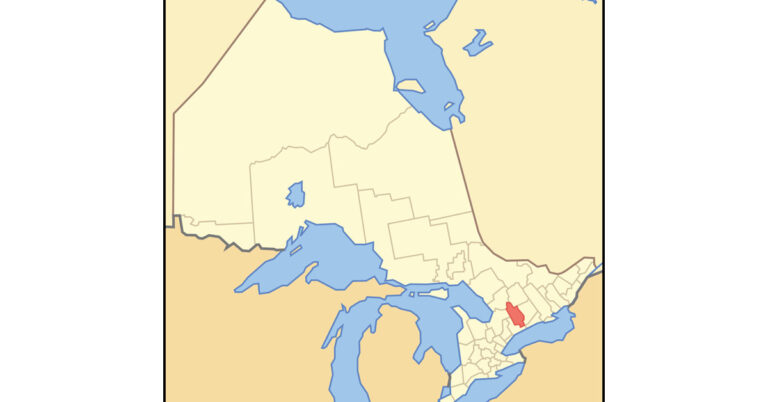Your horse is standing in the pasture on three legs, unable to walk. Or he’s at the gate, covered in blood and frantic with distress. Or you find him in his stall, hay untouched, down and trying to roll.
Let’s hope none of these things ever happens—but if you have a horse, you need to be ready for emergencies. From foaling difficulties to the elderly horse that goes down and can’t get up, the possibilities for disaster are many. What should you do?
We turned to Margaret Mudge, VMD, an associate professor and equine surgeon who focuses on emergency and critical care at the Ohio State University School of Veterinary Medicine. Here, with her help, we highlight 10 guidelines that will encourage you to think clearly and act fast in any equine health crisis. You’ll also find specific tips for handling some of the most common emergency situations and, at the end of this article, steps you can take to be ready before misfortune strikes.
Perhaps the most important thing you can do to prepare for an emergency, Dr. Mudge says, is establish a relationship with a veterinarian. “Veterinarians have an obligation to provide emergency care and advice to their clients, and they are more likely to respond to a middle-of-the-night call if it comes from a client,” she explains. “Also, a vet can provide phone advice only if she has an established relationship and knows the horse. If she hasn’t seen your horse before, legally she can’t do that.”
Emergency Top 10
Every emergency is unique, and it can be nearly impossible to know exactly what you may face. Use these guidelines as a roadmap to help you get through any critical situation with your horse. Mentally rehearse them now, envisioning how you will smoothly handle different situations.
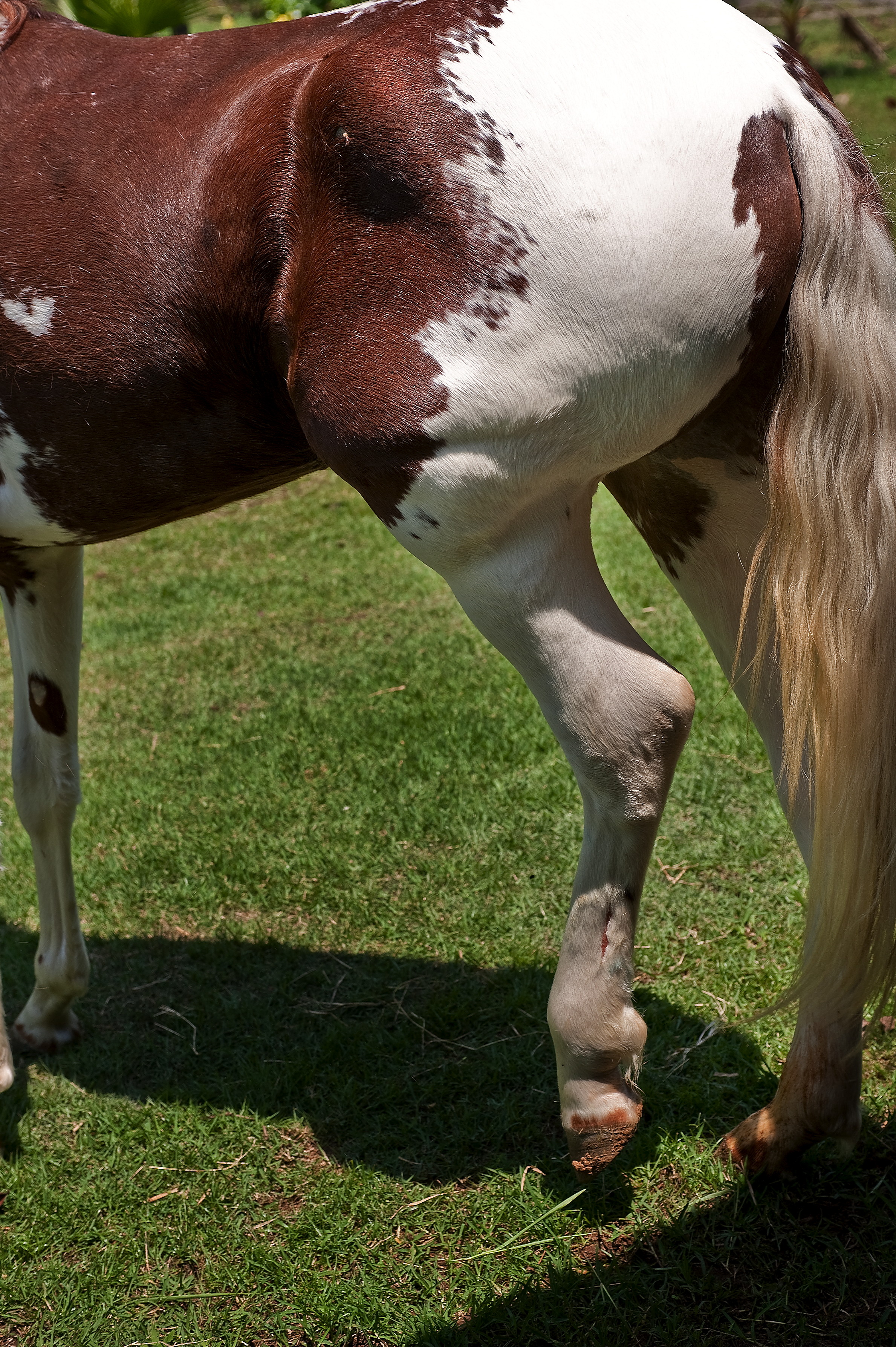
1. Stay calm. This is easier said than done—but it is essential. Horses tend to panic when they’re in pain and you will fuel that reaction if you panic as well. A panicking horse can injure himself and you, so take a deep breath. Speak soothingly and move deliberately when you handle the horse even if deep inside you want to freak out.
2. Call right away. If you can’t leave the horse, call from your cellphone or ask someone to call for you. Your horse needs veterinary help urgently if he:
- can’t bear weight on a leg,
- has a wound that will not stop bleeding or an injury near a vital structure like a joint,
- shows signs of severe or persistent colic or acute laminitis,
- injures an eye,
- struggles to breathe or
- shows severe neurological symptoms.
Plenty of other situations can qualify, too. If you’re not sure you’re looking at a true emergency, put in a call to your vet’s office anyway to let her know what’s happening and get her input. Don’t worry that she’ll think you’re overreacting. While you’re waiting for the vet to call back,
3. Put the horse in a safe place. “Move him into a quiet stall or a round pen where you can monitor him. Pick a place where there will be plenty of room for the veterinarian to work around the horse,” Dr. Mudge says. “A double stall or a round pen is best for a horse that may go down, as there’s less chance that he’ll get cast or injured.” Exceptions:
- Don’t try to move the horse if you think he may have fractured a bone (if he is unwilling to put weight on a leg, for instance).
- Put your safety first. “Stay back if he’s too panicky or unsteady on his feet to safely handle,” Dr. Mudge advises.
4. Get help. An extra pair of hands is invaluable in an emergency. Draft an assistant to help hold the horse, open gates, get first-aid supplies, make phone calls and the like.
5. Assess the problem. Look the horse over carefully for injuries and trouble signs. Is he agitated or depressed? Off his feed? Lame or reluctant to move? Staggering or going down? If he has a wound, where and how deep is it? Check his vital signs—body temperature, heart rate and breathing rate—for clues to the seriousness of the situation. Rapid respiration or an elevated heart rate (a resting rate over 50 beats per minute) may signal distress. A rectal temperature above 102 degrees F may suggest infection or inflammation.
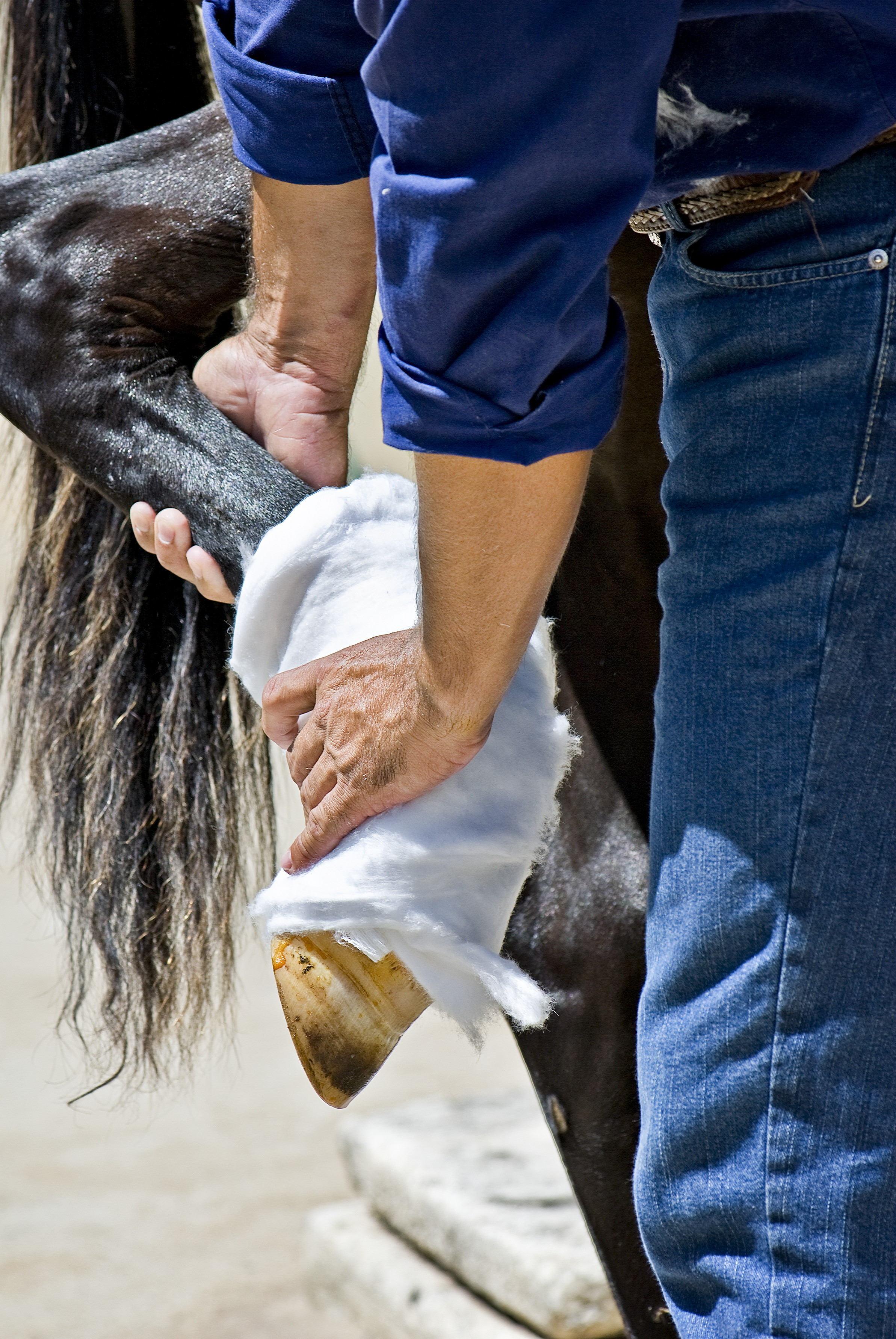
“Gum color can help show the horse’s pain level and severity of illness,” Dr. Mudge says. Gums and other mucous membranes should be moist and healthy pink; dry, dark, bright red or purple gums could indicate a potentially serious condition.
6. Report what you see. Write down your observations and report them to the vet. The information you provide will help her judge the severity of the case and decide on the next steps. “If you have a smartphone, send pictures of injuries or a video showing the horse’s behavior or movement,” Dr. Mudge suggests.
7. Give first aid when you can. Basic first aid can make a big difference for wounds and certain other conditions. You’ll find details of some actions you can take—and some you should not take—below.
8. Hold off on medicating. Get a green light from the vet before giving your horse drugs. “There is rarely a need to administer medication before the vet gets there,” Dr. Mudge says, and there are risks. Certain drugs could be harmful if the horse has suffered severe blood loss or shock from an injury and some may mask signs and make it more difficult for the vet to assess his condition. “If you have given medication, be sure to tell the vet when she arrives so she can factor that into her treatment,” she adds.
9. Let him chill. Once you’ve checked the horse and applied any appropriate first aid, let him rest quietly while you wait for the vet. “Unless the problem is colic or choke, you can offer hay—forage can distract and calm him,” Dr. Mudge suggests. Keep noise and activity to a minimum around the horse’s stall. If you’re at a busy barn and curious onlookers cluster around, ask them to stay away.
10. Stay watchful. Keep an eye on the horse and note if his signs change for better or worse. As long as he seems stable, you don’t need to do more, but be ready to act quickly if the picture changes. You may need to calm him if he begins to get agitated, for example, or bring him out for a walk.
Action Plan: Colic
Colic tops the list of horse health crises that worry people most. A colicking horse may go off his feed, paw the ground, stand stretched out, turn to look or nip at his belly, repeatedly lie down and get up or try to roll. He may stop passing manure or his manure may be abnormally hard and dry or soft and runny. The signs don’t tell you what’s going on inside—the problem could be as simple as a bit of gas or as severe as a blocked or twisted intestine. Here’s what you should do.
- “Remove hay and any other feed from the horse’s stall. If he has an impaction, you don’t want anything to add to it,” says Dr. Mudge. Water should always be available, though.
- Watch him closely. Mild gas colic may disappear on its own. Unless the horse is trying to roll or showing other signs of severe pain, it may be safe to watch him for a while. But if he is still uncomfortable after a couple of hours or if his signs clear up and then return, call the vet right away.
- Walk him when necessary. If he’s lying quietly in his stall, you don’t need to get him up—but if he starts to roll and thrash around, that’s a different situation. “The idea that rolling can cause a twisted gut is debatable, but the horse may injure himself or get cast in the stall,” Dr. Mudge says. “Bring him out and walk for five minutes or so until the spasm passes.” Walking may help the horse pass gas, but it should not continue for hours, she adds. If the pain doesn’t seem to relent with moderate walking, he needs veterinary attention, not more of the same treatment.
Should you give Banamine? Many barns keep this drug (flunixin meglumine, a nonsteroidal anti-inflammatory) on hand in case of colic because it’s particularly effective for easing gut pain. But, Dr. Mudge notes, “It’s important to know that Banamine is not a colic cure—it does not change the condition that causes the colic.” If a colicky horse is given Banamine and seems to recover on the spot, odds are the signs were caused by gas that was passed before the drug wore off, she says. “Unless the horse is very dehydrated, there’s probably no harm in giving one dose [1 milligram per kilogram of body weight, or 500 milligrams for a typical adult horse] to see if that resolves the colic. If it doesn’t, don’t just repeat the dose. The horse will need other treatment, including fluids and a sedative that the vet can provide.”
Action Plan: Wounds
Every scrape or cut isn’t an emergency. Those that are include wounds that won’t stop bleeding or are deep enough to require stitches—that is, the cut goes all the way through the skin so it gaps if you gently pull the edges. These wounds heal best if they’re sutured within the first eight hours. Punctures (especially in the foot) and wounds that involve a joint or tendon need quick veterinary attention, too—the risk of infection is high.
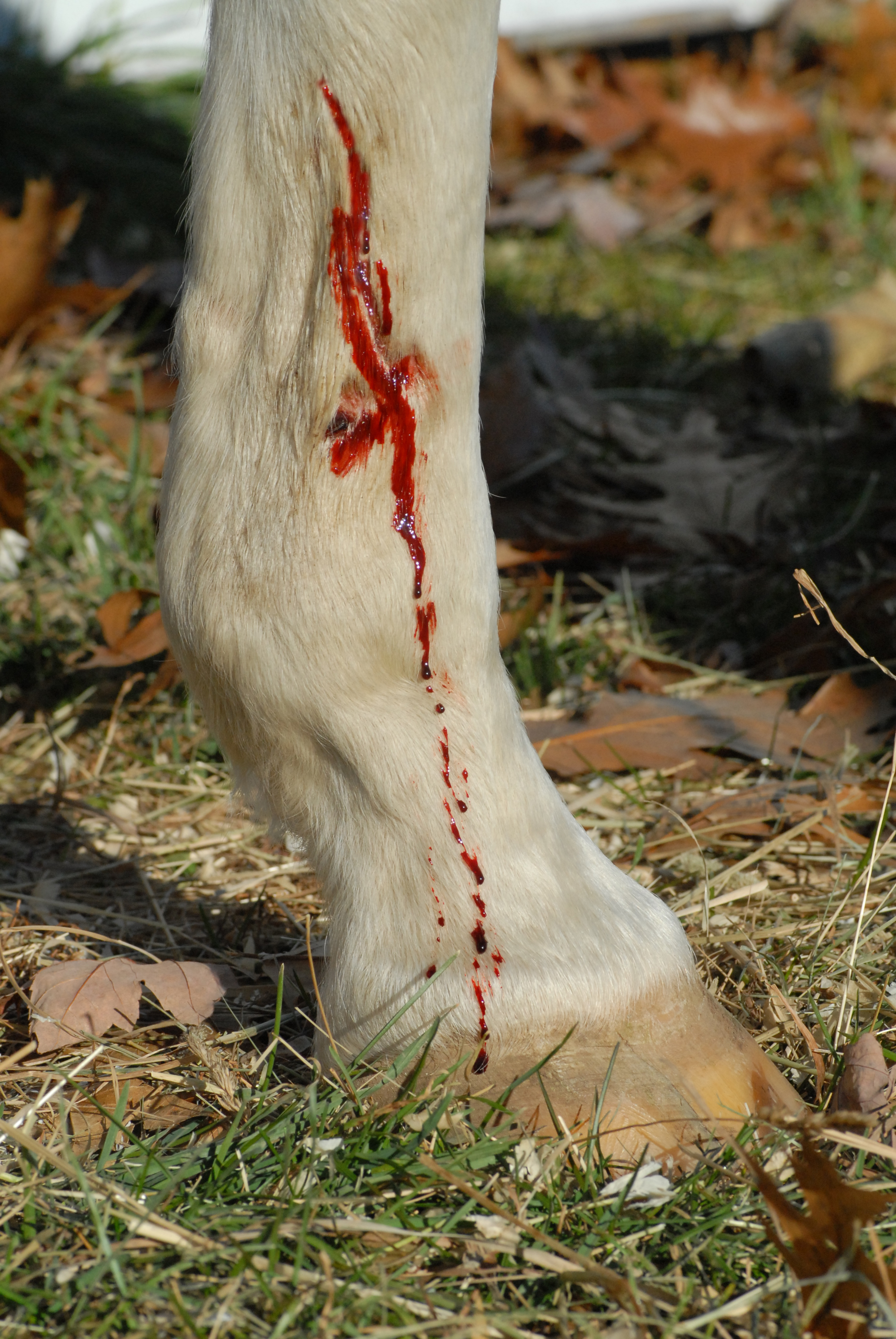
- Use your smartphone to send a picture of the wound to your vet, Dr. Mudge suggests: “A photo will help her make a preliminary assessment of the damage and give you appropriate advice on what to do next.”
- Clean the wound with sterile saline solution or a gentle stream of water from a hose to flush out dirt and debris. But don’t attempt to remove large or deeply embedded pieces of debris—splinters, a nail in the hoof—without consulting with the vet.
- Bandage the wound if the location permits. For a leg wound apply a clean gauze pad covered with a clean leg quilt and a knit or flannel wrap. The wrap should be snug enough to keep the gauze against the wound without harming tendons or other tissues.
- Stop bleeding. Bandaging usually helps stop bleeding. “If a leg wound keeps bleeding through the bandage, you may need to apply a snug layer of bandaging above the wound to slow the flow,” Dr. Mudge says. For a body wound, hold sterile gauze pads or a clean folded cloth over the site and press firmly until the flow stops.
- Don’t apply topical ointments or sprays without the vet’s approval. They may interfere with suturing and make it more difficult for the vet to assess and treat the wound.
Action Plan: Eye Injury
“An injury in or around an eye is always an emergency. It may seem minor, but it’s difficult to tell without expertise and special equipment,” Dr. Mudge says. Swelling, squinting, redness, cloudiness, excessive tearing or other discharge should prompt a call to the vet. “Even a small laceration on the lid must be sutured to make sure that the lid heals with smooth margins and closes properly.”
- Send a picture to the vet if you can.
- Manage discomfort. Eye injuries can be very painful, so the vet may OK a dose of Banamine or another nonsteroidal anti-inflammatory. If the horse is squinting and seems sensitive to light, move him to a dark stall or put on a fly mask to shade the eye.
- Prevent rubbing. It’s common for a horse to rub a sore or itching eye against his leg, but that will only make the problem worse. Walk him or offer food to distract him.
- Don’t try to treat the problem on your own, Dr. Mudge advises: “It may be safe to gently flush away dirt and discharge with sterile eyewash—if the horse will let you. Otherwise, wait for the vet, who can give the horse a tranquillizer and carry out a thorough examination.” And don’t medicate the eye with ointments or drops you may have on hand, she adds: “They may be contaminated with bacteria, and using the wrong medication may do more harm than good.”
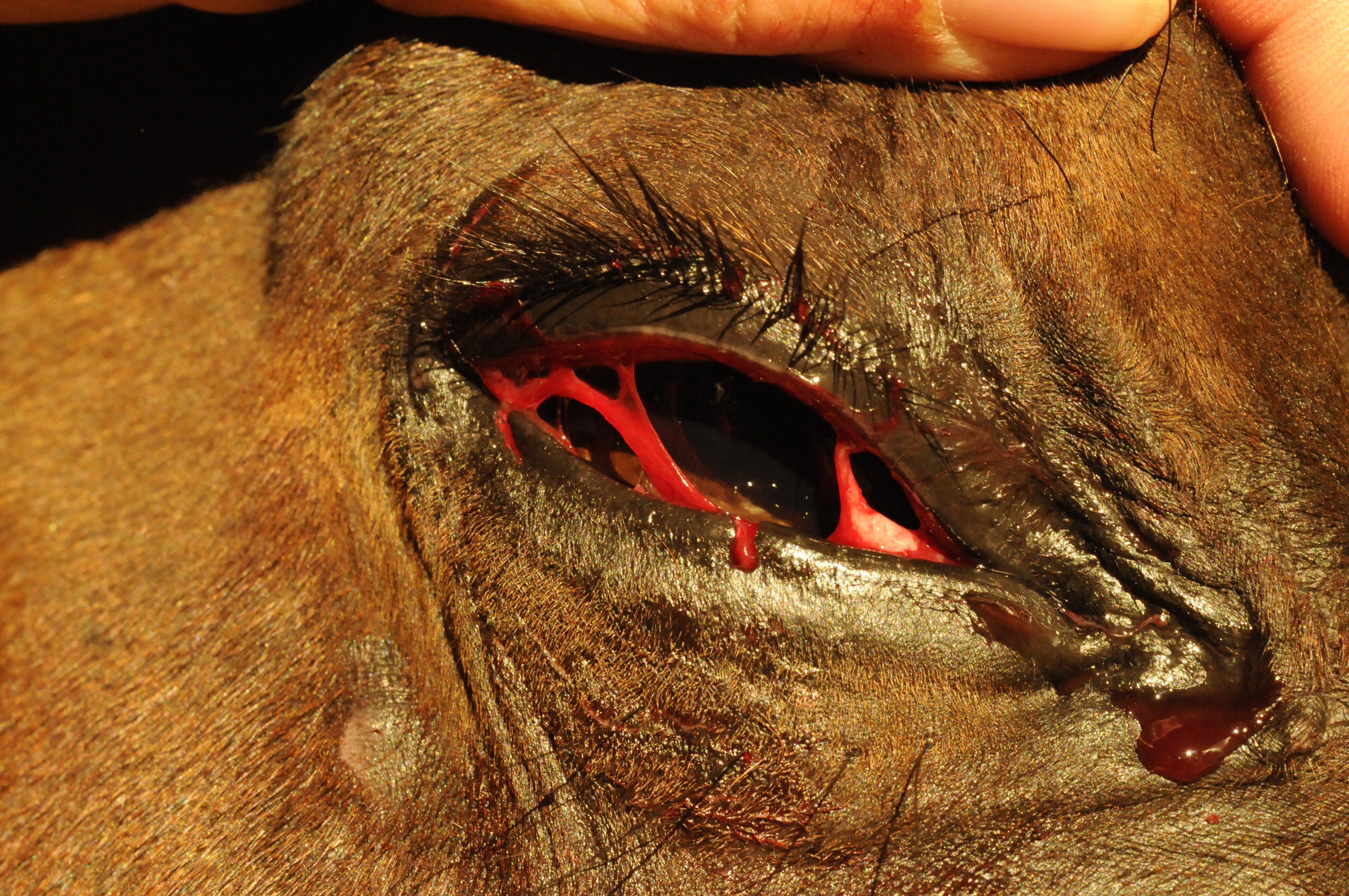
Action Plan: Choke
“The term ‘choke’ is really a misnomer as it’s applied to horses,” Dr. Mudge says. A person chokes when food takes a wrong turn into the trachea (windpipe), cutting off air intake, instead of heading down the esophagus, the long tube that leads to the stomach. In horses, she explains, “Choke is an obstruction of the esophagus, not the trachea, so the horse can still breathe. But it’s an emergency all the same.” As chewed food and saliva back up in the esophagus, “The backup may foam out through the horse’s mouth or nostrils, or—and this is the big risk—it may be aspirated, inhaled into the lungs as the horse breathes.” That could potentially lead to pneumonia.
- Put the horse in an empty stall with no food or water. Anything he consumes could be inhaled into his lungs and make the condition worse.
- Call the vet. Many cases of choke clear on their own, but waiting for that to happen increases the risk of side effects. Besides aspiration and pneumonia, those can include damage and scarring of the esophagus.
- Stay with the horse and try to keep his head down. A horse with choke will often lower his head as he tries to clear the blockage. Encourage that behavior—with his head down, whatever comes up his esophagus will tend to exit through his mouth and nostrils rather than down his trachea.
- Concentrate on calming the horse. Don’t upset him with heroic attempts to clear the blockage. You can’t perform the Heimlich maneuver on a horse and if you could it wouldn’t help—that move clears the trachea, not the esophagus. You won’t be able to clear the blockage by reaching into the back of his mouth, either, because it could be anywhere in the esophagus, even all the way down by the stomach.
When the vet arrives, she can give the horse a strong sedative that will help keep his head down and relax his esophagus. If that’s not enough to clear the choke, she can also perform lavage—
inserting a nasogastric (stomach) tube down the esophagus and gently pumping in warm water. This process can often help to soften the blockage and move it along.
Action Plan: Neurologic Signs
Neurologic signs range from subtle to scary—anything from a slight abnormality in gait to seizures, staggering, head-bobbing and other strange behavior.
The cause may be a toxic plant that the horse consumed, an injury or congenital defect that affects the central nervous system or a disease like equine protozoal myelitis (EPM) or equine herpesvirus myeloencephalopathy (EHM). The more severe the signs, the more urgent the need for veterinary care—the horse could injure himself or the people around him.
- Recognize when it may not be safe to handle the horse alone. “A horse with a neurological problem may be mentally off or so unsteady on his feet that he falls without warning,” Dr. Mudge says. You don’t want to be in the wrong place if that happens.
- If the horse is safe to handle and you have a round pen, put him in it. Because a round pen doesn’t have corners, he will have less of a chance of injuring himself there. A double stall is the next-best option.
- Take a video. “Neurological signs often shift or come and go, so the behavior that prompted you to call the vet may disappear by the time she arrives,” Dr. Mudge explains “A video will serve as a record and help her figure out what’s going on.

Ready for Anything
Preparation will give your horse an edge in any emergency. Here are six ways you can be ready:
- Know your horse. “Know what’s normal in terms of his personality and behavior so you can recognize if he is distressed or in pain,” Dr. Mudge says. “Know his normal vital signs and how to take them.”
- Keep your veterinarian’s office and after-hours numbers on your phone and posted in the barn.
- Know which friends and neighbors you can turn to for help and keep their numbers handy, too.
- Have a first-aid kit in the barn and another in your trailer. It can be simple—sterile gauze pads, clean bandages and wraps, adhesive wrap or tape, sharp scissors, an equine thermometer, maybe an inexpensive stethoscope—or more elaborate.
- Make a game plan for referral to a hospital. “Know where you’ll go and how you’ll ship the horse there,” advises Dr. Mudge. “Time counts—if it takes four hours to arrange transportation to a clinic, your horse could arrive sicker and stand less chance of recovery.”
- Know what you can spend. “Decisions can be colored by emotions in an emergency and costs for hospital care can add up quickly,” Dr. Mudge notes. “If you know in advance how much money you are willing to spend, you’ll be less likely to get in over your head.”
This article was originally published in the November 2017 issue of Practical Horseman.





